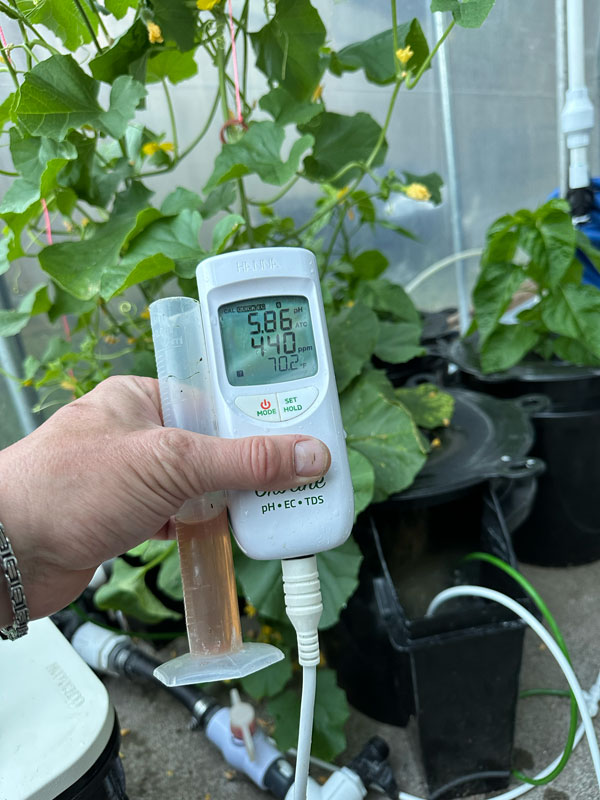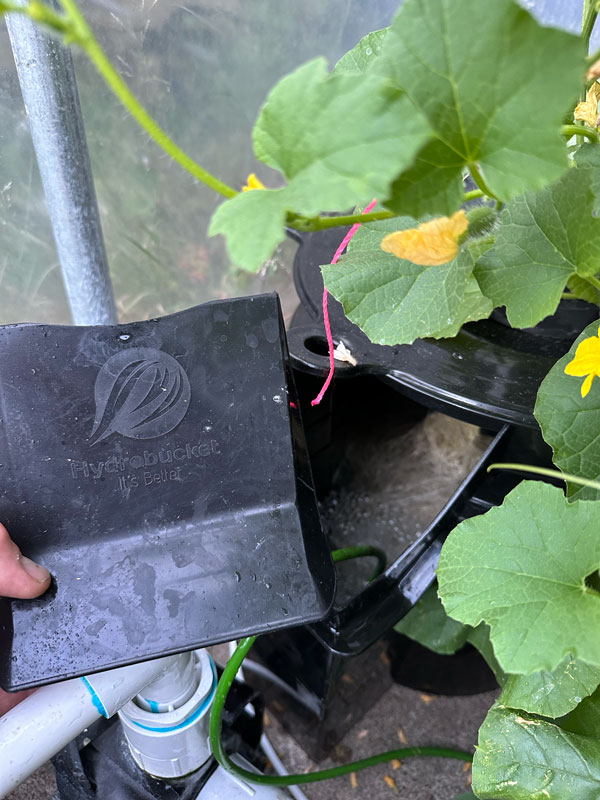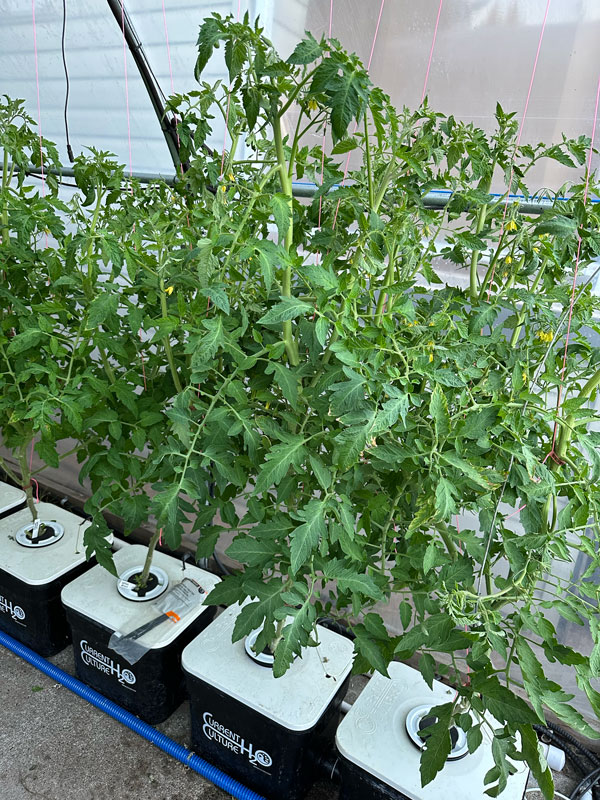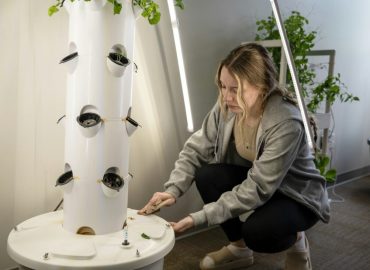DWC Grow Tips
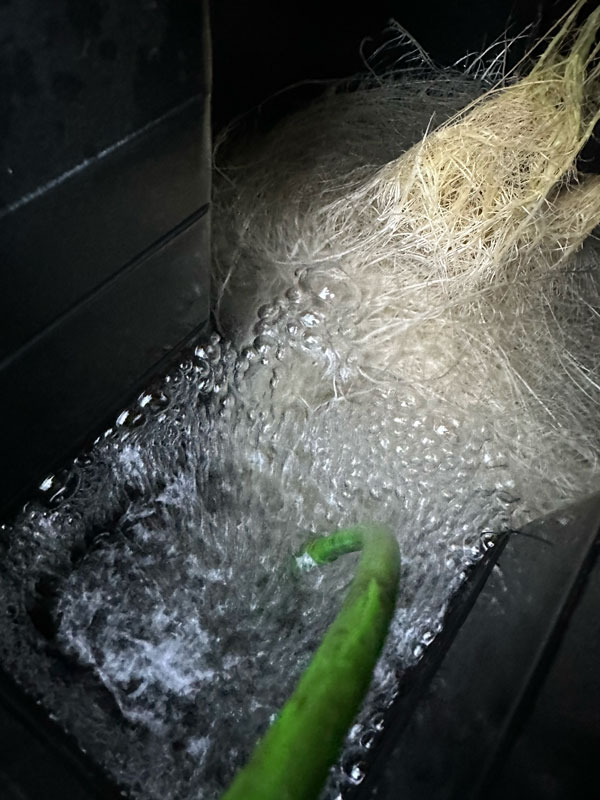
DWC Growing Part III
Part One | Here | Part Two | Here |
In part III in our how to DWC article series we offer DWC grow tips for growing your favorite plants in deep water culture like the Pros.. Now that we have the fundamentals from Parts I & II in our series, we can focus on some of the finer points.
DWC Grow Tips, Crop Feeding
As we stated earlier, less is more–plants don’t need soil strength fertilizer levels in DWC because of all the oxygen they have at the roots and no growing medium to get in the way of maximum absorption rates. Healthy DWC plants handle nutrients more efficiently versus conventional methods.
While optimal nutrient levels and conditions can vary somewhat from plant species or cultivar, the following general nutrient recommendations provide a solid baseline and work great with most common crops like tomatoes, peppers, cucumbers, melons, cannabis, etc
Early Transplants (rooted cuttings or established seedlings)
EC*: 0.5 to 0.75 vegetative growth formula
pH 5.7 to 6.4
ORP** 250-350 mV
Vegetative Growth (well established plants, aggressive green growth)
EC 1.0 to 1.3 vegetative growth formula
pH 5.7 to 6.4
ORP 300-400 mV
Early Flowering, Fruit Set (transitioning to fruiting-flowering)
EC 1.0 to 1.3 bloom or flowering formula
pH 5.7 to 6.4
ORP 350-400 mV
Peak Bloom or Fruiting (established flowers or fruits)
EC 1.3 to 1.5 bloom or flowering formula + hydroponic bud booster
pH 5.7 to 6.4
ORP 350-400 mV
Ripening (plants maturing, production winding down; no new flowers or fruits)
EC 0.7 to 1.0 bloom or flowering formula + hydroponic bud booster
pH 5.7 to 6.4
ORP 250-300 mV
*EC (ms/cm) is the most universal method for measuring fertilizer strength with an electronic tester. PPM (parts per million) is another common scale, however, there is more than one conversion type from to EC to PPM depending on meter brand. This CHART helps explain the conversion. NOTE: following a reputable manufacturers general recommendations is typically accurate if no electronic tester is available.
**ORP (oxidation reduction potential) is a value that measures the general health or hygiene of a water source or nutrient solution. Typically electronic testers are used and the reading is provided in mV (millivolts). A value of 250 to 400 is typically considered healthy; above may damage plant tissue. A low value, particularly if it occurs suddenly, can suggest there is a higher level of microbial activity, i.e. contamination. Hypochlorous Acid or Ozone are commonly used to raise ORP value.
DWC Grow Tips, Solution Management
It’s not necessary to keep an exact value. When checking or testing nutrient solutions it’s OK to allow a range, as listed above, to occur before making adjustments. You might even find that there are fairly consistent changes from day to night, ie pH drops a couple of points in the dark cycle before rising again once the light cycle begins. Big drifts that occur in a short time frame, particularly with ORP or pH could indicate that there is a contamination or infection in the root zone.
In which case inspect plants and the system carefully for any signs of trouble ie browning roots. At the first sign of trouble a complete nutrient change out is recommended.
Bio-Fungicides can help prevent and control root diseases should they occur. Some, like MycoStop (streptomyces) may be used in conjunction with hypochlorous acid for control and protection of common root diseases.
Typically it is advisable to do a complete nutrient change out once a week in a 5 to 8 gallon bucket system. Larger grow modules may just need 25 to 75% of the nutrient changed out weekly.
Keep the solution depth relatively constant, topping up with fresh water. A simple gravity fed float valve can do this automatically. If not, try and top up daily with fresh, clean, pH adjusted water.
DWC Grow Tips, Nutrient Solution Temperature
For most crop types, keeping the root zone temperature between 68 to 72 degrees is optimal for maintaining good dissolved oxygen levels (DO). At higher temperatures, nutrient solutions hold less dissolved oxygen. Low dissolved oxygen levels can create anaerobic conditions that favor root disease causing pathogens and otherwise impede plant health and development.
The above said, if maintaining very hygienic conditions in the root zone with a close eye on ORP some DWC crops will tolerate root zone temperatures into the low 80’s (F) provided there is a cool down period in the dark cycle. Wrapping modules in insulative materials like silver bubble wrap can help shield the solution from strong light, reducing solution temperatures.
DWC Grow Tips, Best Type of Fertilizers to Use
Use a fertilizer that states suitability for hydroponic use. Common garden fertilizers typically contain ammonium nitrate and/or ammonium phosphate. These are agricultural grade fertilizers that tend to be too “hot” for use in DWC hydroponic culture. They will cause pH fluctuation and nutrient burn. Urea forms of fertilizer are typically best avoided too, even in smaller amounts for reasons similar to ammonium sources. Nutrient solutions that supply nitrogen in Nitrate forms, ie Calcium Nitrate as an ingredient are usually a good choice and are well suited to DWC.
Make sure the formula you are using is complete and can be tailored for bloom or vegetative growth.
If using Reverse Osmosis filtered water, a small amount of an additional Calcium-Magnesium supplement may be required.
***Avoid using organic based fertilizers or supplements in DWC; unwanted biological activity can lead to problems quickly—these products are best reserved for media based or soil based gardens. Keep it clean and 100% soluble in DWC gardens. Especially avoid carbohydrates or sugars***
DWC Grow Tips, Cleaning DWC Systems
We can’t stress enough the relationship between cleanliness and success in DWC. Luckily, it’s not hard since we aren’t working with soil or even any growing medium at all in some instances.
After crops are harvested, remove all of the root matter from the bucket or grow module. The lids, net baskets, collars etc can be taken away for cleaning—usually no need to move buckets or modules. Fill the DWC mods with a mild solution of hydrogen peroxide and water or bleach and water. Let soak for a few hours and drain. Scrub thoroughly with a nylon brush, making sure to get in corners, joints, etc. Rinse very well with lots of fresh clean water—would you keep your drinking water in there? Ideally it should be that clean.
Lids, net pots, collars etc can be cleaned in a sink, similar to the method described above. Make sure that all debris has been rinsed away very well–ie no old root matter.
Air stones can be soaked in a mild hydrogen peroxide solution and scrubbed clean with an old toothbrush. Occasionally, air stones will get bunged up with microbes and organic matter—sometimes they are easier to replace.
Reassemble with lids, net pots and fill with fresh, pH adjusted water. Ensure that all air stones are providing similar aeration levels–replace any that are not performing up to the rest.
The post DWC Grow Tips appeared first on GROZINE.



